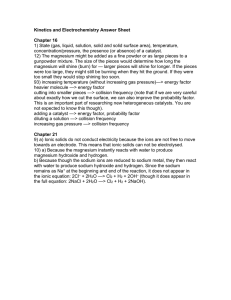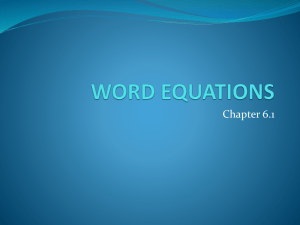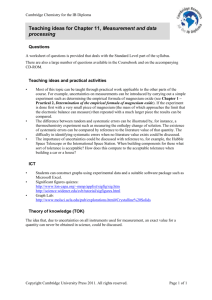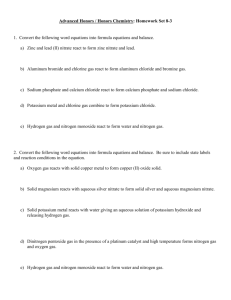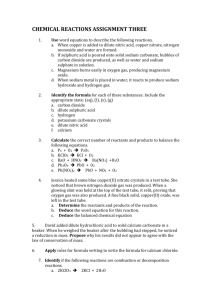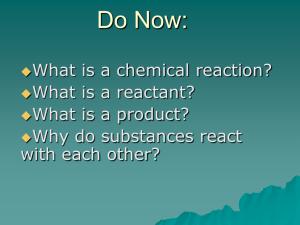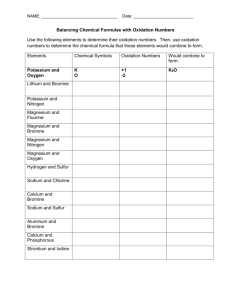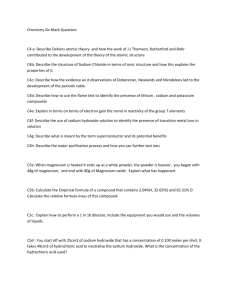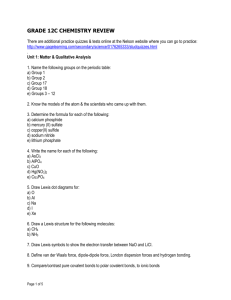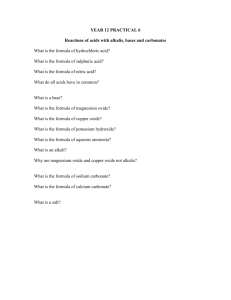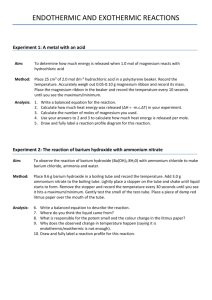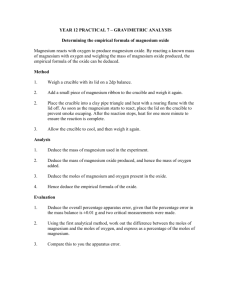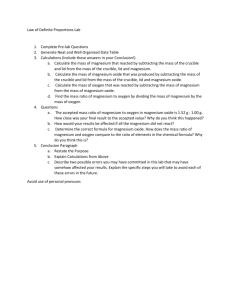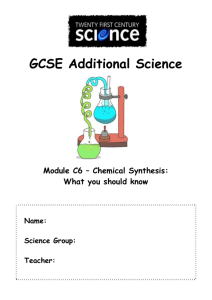Classifying Reactions Review
advertisement
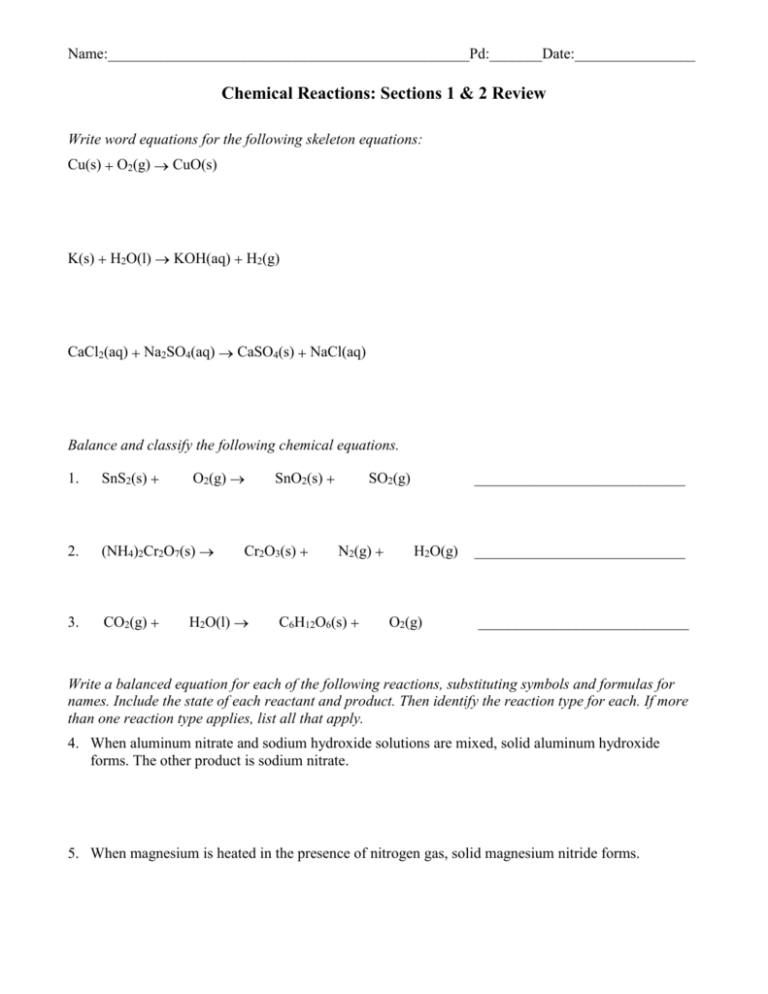
Name:________________________________________________Pd:_______Date:________________ Chemical Reactions: Sections 1 & 2 Review Write word equations for the following skeleton equations: Cu(s) O2(g) CuO(s) K(s) H2O(l) KOH(aq) H2(g) CaCl2(aq) Na2SO4(aq) CaSO4(s) NaCl(aq) Balance and classify the following chemical equations. 1. SnS2(s) O2(g) SnO2(s) 2. (NH4)2Cr2O7(s) 3. CO2(g) SO2(g) Cr2O3(s) N2(g) H2O(g) H2O(l) C6H12O6(s) O2(g) ____________________________ ____________________________ ____________________________ Write a balanced equation for each of the following reactions, substituting symbols and formulas for names. Include the state of each reactant and product. Then identify the reaction type for each. If more than one reaction type applies, list all that apply. 4. When aluminum nitrate and sodium hydroxide solutions are mixed, solid aluminum hydroxide forms. The other product is sodium nitrate. 5. When magnesium is heated in the presence of nitrogen gas, solid magnesium nitride forms. 6. Most industrial production of metallic sodium is accomplished by passing an electric current through molten sodium chloride. Chlorine gas also is produced. 7. Magnesium burns in air to form magnesium oxide. 8. When solid naphthalene (C10H8) burns in air, the reaction yields gaseous carbon dioxide and liquid water. 9. Solid magnesium reacts with nitrogen gas to produce solid magnesium nitride. Write the chemical equations for each of the following synthesis reactions. 10. Boron + fluorine 11. Germanium + sulfur 12. Zirconium + nitrogen 13. Tetraphosphorus decoxide + water phosphoric acid Write the chemical equations for the combustion of each of the following substances. If a compound contains carbon and hydrogen, assume that carbon dioxide gas and liquid water are produced. 14. Solid barium 15. Solid boron 16. Liquid acetone (C3H6O) 17. Liquid octane (C8H18) Write the chemical equations for each of the following decomposition reactions. 18. Magnesium bromide 19. Cobalt (II) oxide 20. Titanium (IV) hydroxide titanium (IV) oxide + water 21. Barium carbonate barium oxide + carbon dioxide
